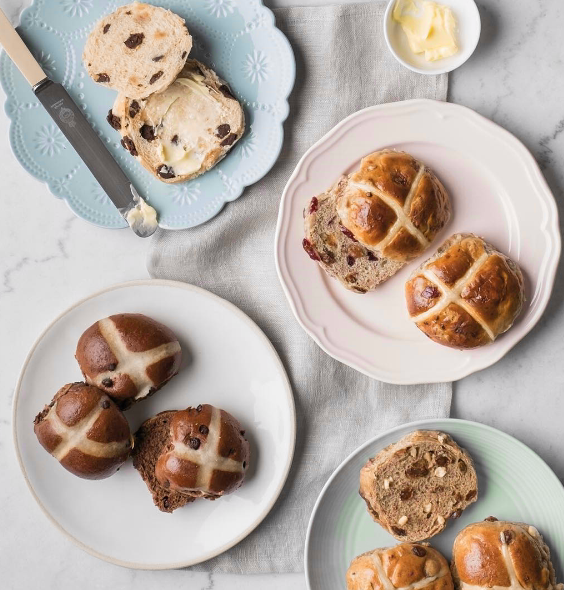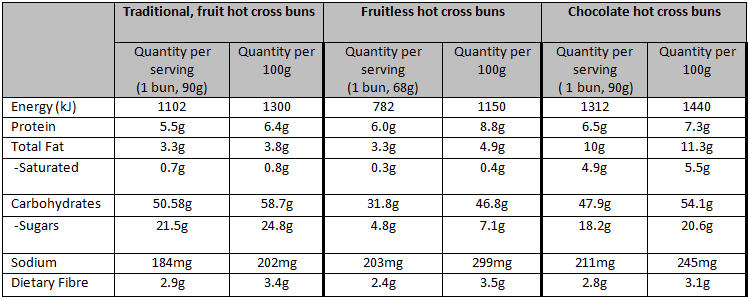
As Easter steadily approaches, bakeries and supermarkets are already bringing out a wide assortment of hot cross buns. From the traditional, to the chocolate-filled varieties, what is the best choice to make over the approaching Easter weekend?
Below is the nutrition information panel of some of our favourite hot cross buns to guide you with your choices…

My thoughts?
You’ll be pleased to know that hot cross buns actually fit into the ‘cereal’ component of the Australian Guide to Healthy Eating, not the ‘discretionary food’ category, so you don’t need to feel guilty eating them. As they are made with flour, they contain some B group vitamins and fibre, although not as much as toast. At the end of the day, having a hot cross bun for breakfast is going to be a much healthier Easter treat than eating chocolate Easter eggs.
So which bun is best? Of the three buns compared, I would say the traditional or fruitless buns are a much better option than the chocolate buns which are significantly higher in saturated fat. You may notice that the ‘sugars’ in the traditional buns are higher than the fruitless buns. That’s not necessarily a result of added sugar, but is likely to be caused by the natural fruit sugars in the fruit.
The most important thing to be aware of is your portion size. One hot cross bun is equivalent to two slices of toast, so if you’re watching your weight, limit yourself to one bun per meal. Although it is important to make nutritionally-informed choices, enjoy all aspects the Easter weekend, including the company of family and friends, one small chocolate Easter egg and our beloved hot cross buns!
